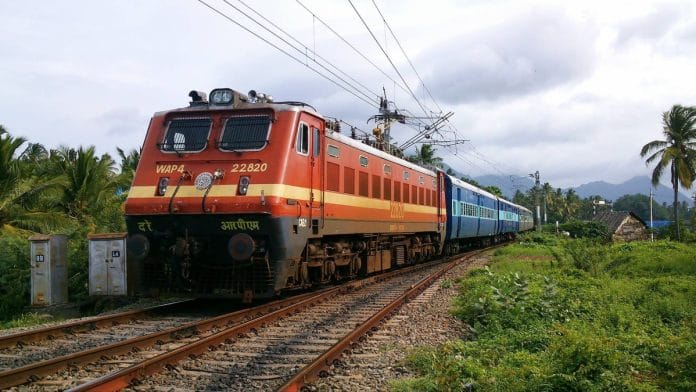Despite strong political, economic, and geostrategic motivations for cross-border railway connectivity, India’s progress in establishing a robust and thriving rail network with its neighbours has not progressed enough.
This paper addresses a critical question in India’s connectivity efforts: Despite the political, economic, and geostrategic incentives driving New Delhi’s cross-border railway initiatives, why has India struggled to sustain momentum in this sector? To explore this, the paper conducts a comprehensive review of India’s cross-border railway connectivity over the past two decades, analysing the progress and the primary drivers behind it.
It seeks to answer four key questions: What has been India’s progress in developing cross-border railways in the last two decades? What are the economic, political, and geostrategic drivers of India’s renewed interest in enhancing railway linkages? What challenges have contributed to the slow development and expansion of railway connectivity between India and its neighbouring countries? Finally, what are the enablers for improving India’s cross-border railway connectivity?
While India has made some headway, inaugurating new lines with Bangladesh and Nepal, the growth of rail freight and passenger traffic remains limited. Road transport continues to dominate due to cost advantages, streamlined processes, and established infrastructure.
Several factors drive India’s push for rail connectivity. Economically, it offers a chance to tap into the region’s burgeoning growth and lower logistics costs, enhancing trade competitiveness. Politically, it aligns with India’s “Neighbourhood First” and “Act East” policies, fostering regional cooperation.
At the geostrategic level, railway connectivity provides New Delhi a counterbalance to China’s growing influence through infrastructure projects in South Asia. However, progress has been slow due to several challenges:
- Institutional fragmentation: Limited coordination between railway agencies and other government departments in India and neighbouring countries hinders project implementation.
- Inadequate infrastructure: Shortage of cargo-handling equipment, inadequate platforms, and a lack of dedicated goods stations create bottlenecks and delays.
- Non-standardised operational procedures: Engine changes at borders, differing customs practices, and CONCOR’s monopoly over container movement add complexity and reduce efficiency.
- Security concerns: Insurgency, smuggling, and political tensions in border regions disrupt operations and necessitate costly security measures.
- Limited private sector participation: Reliance on government funding restricts innovation, investment, and operational efficiency.
To overcome these challenges and unleash the potential of cross-border rail connectivity, India should:
- Strengthen institutional cooperation: Establish dedicated units for cross-border rail projects within relevant ministries, fostering regular dialogue and coordination between Indian agencies and their counterparts in neighbouring countries.
- Leverage development cooperation: Strategically allocate Lines of Credit and grants to support infrastructure development, technology transfer, and capacity building of railway personnel in partner countries.
- Improve cargo-handling infrastructure: Invest in modern cargo handling equipment, dedicated goods stations, and elevated platforms at key rail yards and ICPs.
- Standardise operational procedures: Negotiate bilateral agreements for streamlined customs clearance, engine movement across borders, and simplify booking processes for exporters and traders.
- Enable private sector participation: Encourage private investment and operational management through PPPs to increase efficiency and reduce reliance on government funding.
- Address security concerns: Implement robust security frameworks, leverage technology for surveillance and cybersecurity, and engage in diplomacy and CBMs to mitigate risks in border areas. By embracing these enablers, India can overcome the existing limitations and transform cross-border rail connectivity into a true engine of regional integration, economic growth, and strategic advantage.
Through the revival, construction, and planning of various railway lines with Bangladesh, Nepal, Bhutan, Myanmar, and Sri Lanka, India aims to enhance regional cooperation, trade, and economic development while also improving connectivity between South Asia and South-East Asia. Yet, India’s progress in cross-border railway connectivity has not kept up the momentum in the region.
The benefits of enhanced railway connectivity in a region still grappling with integration challenges are significant. These include the more efficient movement of goods and passengers, lower transportation costs, and a more environmentally friendly mode of transit. India’s renewed focus on railway infrastructure reflects a stronger commitment to regional cooperation and economic development in South Asia.
Historically, India’s reluctance—along with that of its neighbours—combined with capacity limitations, led to an over-reliance on road transportation.
Today, India’s emphasis on developing railway connections with neighbouring countries is driven by both political and economic factors, as well as by the need to respond to China’s expanding railway infrastructure in the region. By establishing robust cross-border railway infrastructure, India also seeks to position itself as the key infrastructure developer in the region.
However, several challenges have hindered the growth of cross-border railway development, including lack of prioritisation, inadequate infrastructure, and the vulnerability of operations to political crises. These obstacles are compounded by ground-level issues such as the absence of standardised operating procedures, limited private-sector involvement, fragmented institutional cooperation, and the complexities of managing security concerns in India’s border regions—all of which have made enhancing railway connectivity particularly difficult.
To achieve its foreign policy and connectivity objectives in the neighbourhood, India must address existing challenges and explore cooperative policy options, including partnerships with like-minded regional players.
Riya Sinha is an Associate Fellow at the Centre for Social and Economic Progress, New Delhi. She tweets @_RiyaSinha. Views are personal.
This is an edited excerpt from the author’s working paper ‘Express Routes: India’s Railway Connectivity with South Asia‘, first published by the Centre for Social and Economic Progress.







Years ago, I watched a show on the National Geographic channel about Jayanagar (India) – Kurtha (Nepal) train. It looked like a fourth-rate African train was operated by the great Indian railways.